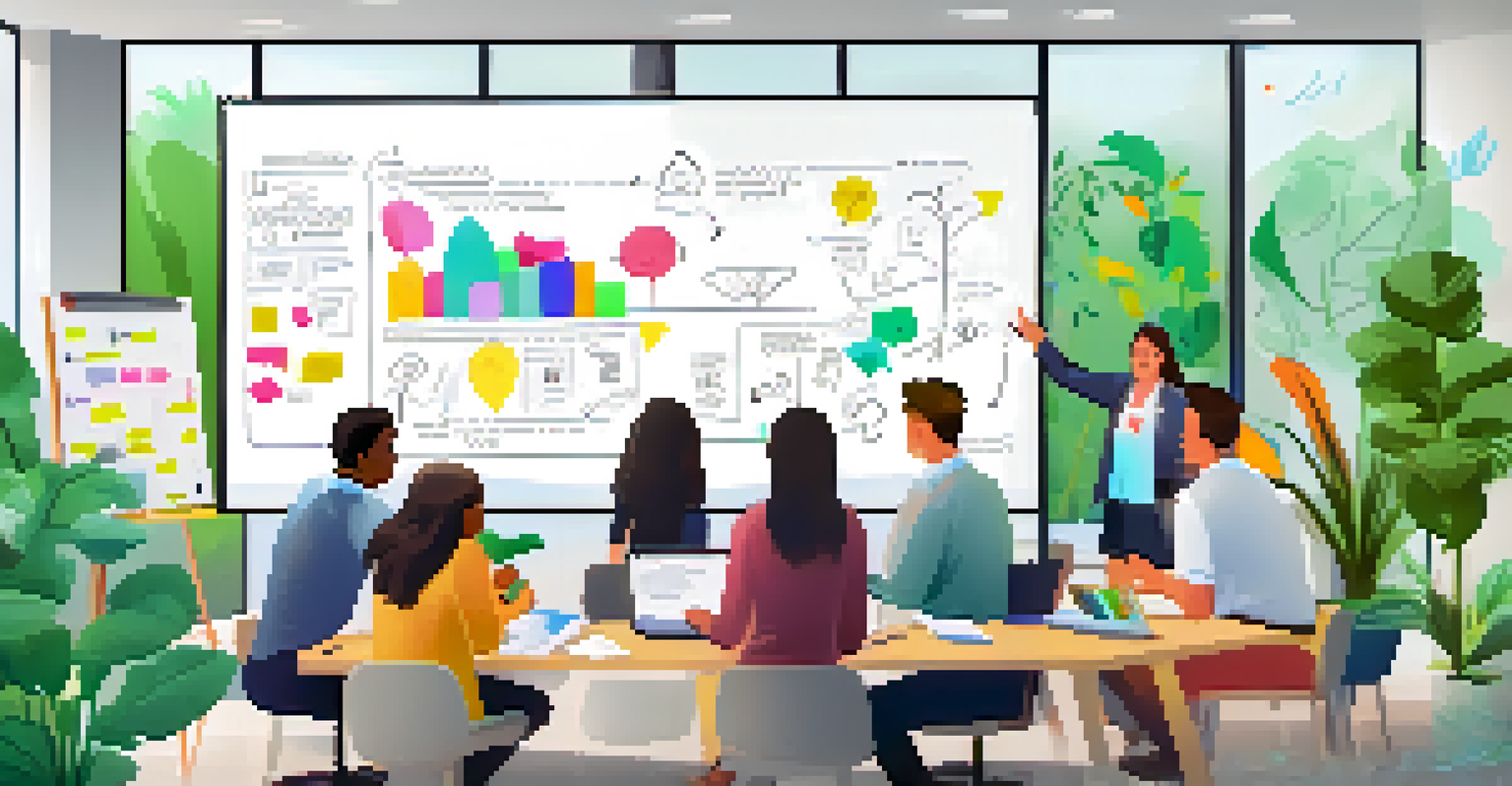Conflict Resolution Strategies for Collaborative Teams

Understanding Conflict in Collaborative Teams
Conflict is a natural part of any team environment, especially in collaborative settings where diverse perspectives come together. It's essential to recognize that not all conflict is negative; sometimes it can lead to innovation and improved problem-solving. Understanding the root causes of conflict, whether they stem from communication breakdowns or differing priorities, is the first step toward effective resolution.
In the middle of difficulty lies opportunity.
When team members feel comfortable discussing their differences, it can create a more open and trusting environment. For example, think about a scenario where two team members disagree on how to approach a project. Instead of avoiding the issue, addressing it openly can lead to a more robust solution that incorporates both viewpoints.
Ultimately, recognizing that conflict is a normal occurrence can help teams to approach it with a constructive mindset. By fostering a culture that encourages dialogue, teams can transform potential disputes into opportunities for growth and collaboration.
Active Listening: The Key to Conflict Resolution
Active listening is one of the most effective tools for resolving conflicts within teams. It involves not just hearing the words being spoken, but also understanding the underlying emotions and perspectives of your colleagues. When team members feel truly heard, it can significantly reduce tension and pave the way for a more productive discussion.

For instance, consider a situation where two colleagues have differing opinions on a project timeline. If both parties take a moment to listen actively to each other’s concerns and motivations, they can uncover common ground. This might lead to a compromise that satisfies both sides, rather than a standoff that hinders progress.
Conflict Can Drive Innovation
Recognizing that conflict is a natural occurrence in teams can lead to innovative solutions and improved problem-solving.
Encouraging active listening practices, such as paraphrasing or asking clarifying questions, can help to create a more supportive team atmosphere. This skill not only aids in conflict resolution but also enhances overall communication and collaboration.
The Role of Empathy in Conflict Resolution
Empathy plays a crucial role when it comes to resolving conflicts in collaborative teams. It allows team members to step into each other’s shoes and understand their perspectives on a deeper level. This emotional connection can help to diffuse tension and create a more harmonious working environment.
The single biggest problem in communication is the illusion that it has taken place.
Imagine a team where one member feels overwhelmed by their workload while another feels their contributions are being overlooked. If both individuals can empathize with each other's situations, they may find a way to redistribute tasks that benefits everyone. This not only resolves the conflict but also strengthens team bonds.
Cultivating empathy within a team can lead to more effective collaboration. By encouraging team members to share their feelings and experiences, you create an environment where everyone feels valued and understood, making conflicts easier to navigate.
Establishing Clear Communication Channels
Clear communication is fundamental to preventing and resolving conflicts. When team members know how and when to communicate, misunderstandings can be minimized. Establishing guidelines for communication can help to ensure that information flows smoothly and everyone is on the same page.
For example, if a team decides to hold regular check-ins or use collaboration tools for updates, it can reduce the likelihood of miscommunication. If a conflict arises, these established channels can provide a framework for addressing the issue quickly and efficiently.
Empathy Enhances Team Dynamics
Empathy allows team members to understand each other's perspectives, fostering a harmonious environment and strengthening team bonds.
Encouraging open dialogues and feedback can further enhance communication. By fostering a culture where team members feel comfortable raising concerns, you can create an environment that prioritizes clarity and mutual respect.
Implementing Conflict Resolution Techniques
There are several techniques that teams can utilize to effectively resolve conflicts. Techniques such as mediation, brainstorming sessions, or even role-playing can help to address disputes constructively. Each of these methods provides a structured approach to conflict resolution, making it easier for team members to express their concerns.
For instance, a mediation session led by a neutral third party can help to facilitate a productive discussion between conflicting team members. This allows each person to voice their perspective while receiving guidance on how to collaborate toward a solution.
Encouraging teams to experiment with different techniques can help identify what works best for them. By being open to various approaches, teams can enhance their conflict resolution skills and improve their collaborative efforts.
Setting Ground Rules for Team Interactions
Establishing ground rules for team interactions can significantly reduce conflicts and pave the way for smoother collaborations. These rules should outline acceptable behaviors and communication styles, ensuring that everyone understands the expectations. When team members know what is expected of them, it can lead to a more respectful and productive environment.
For example, teams might agree on rules such as 'no interruptions during discussions' or 'address issues directly with the person involved.' This promotes accountability and encourages team members to engage in healthy, respectful exchanges.
Clear Communication Prevents Issues
Establishing clear communication channels minimizes misunderstandings, helping to create a respectful and productive team atmosphere.
Having these ground rules in place can serve as a guide during times of conflict. When disagreements arise, referring back to the established norms can help remind team members to approach the situation constructively.
Encouraging a Collaborative Mindset
Fostering a collaborative mindset is essential for preventing and resolving conflicts. When team members view each other as partners working toward a common goal, they are more likely to approach disagreements with a spirit of cooperation. This shift in perspective can transform conflicts from being adversarial to being opportunities for collaboration.
For instance, instead of competing for credit on a successful project, team members can celebrate their collective achievements. By recognizing that everyone’s contributions are valuable, it encourages a culture of teamwork rather than rivalry.

Encouraging a collaborative mindset can be actively cultivated through team-building activities and shared goals. These practices help to strengthen relationships and create a more unified team, making it easier to navigate conflicts when they arise.
Evaluating Conflict Outcomes for Continuous Improvement
After a conflict has been resolved, it’s beneficial for teams to evaluate the outcome. Reflecting on what worked, what didn’t, and how the situation was handled can provide valuable insights for future conflicts. This practice of reflection promotes continuous improvement and helps teams to refine their conflict resolution strategies.
For example, a team might review a recent disagreement and discuss whether their communication channels were effective. Did they follow their ground rules? Understanding these elements can help them avoid similar issues in the future.
Encouraging a culture of learning from conflicts not only strengthens team dynamics but also enhances overall collaboration. By viewing conflicts as chances for growth, teams can develop resilience and improve their collaborative efforts over time.